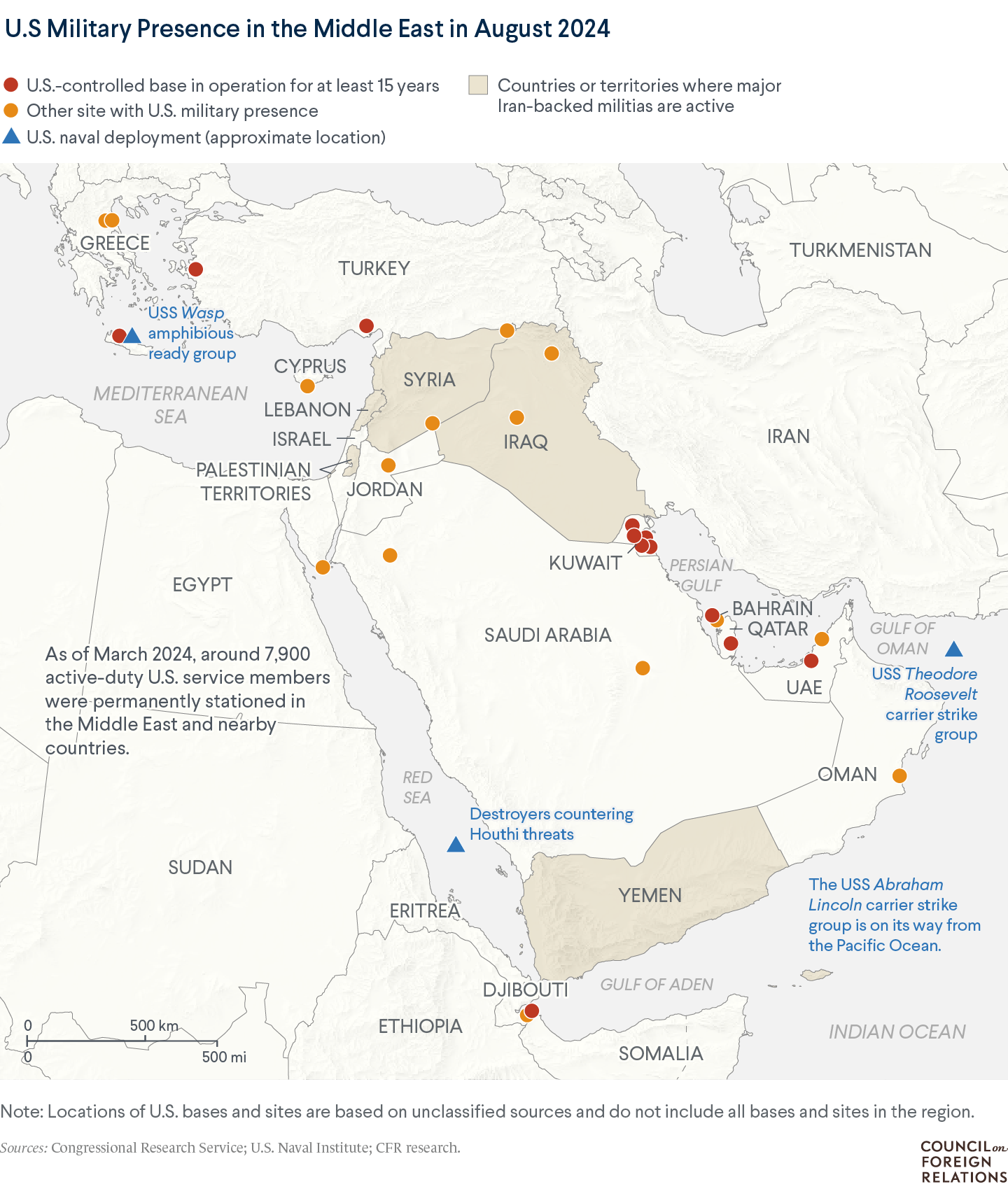Mapping the Growing U.S. Military Presence in the Middle East

The U.S. military has an extensive footprint in the Middle East, but it could surge forces in the region if a broader war erupts.
August 6, 2024 4:53 pm (EST)

- Article
- Current political and economic issues succinctly explained.
The United States maintains a considerable military presence in the Middle East, with forces in more than a dozen countries and on ships throughout the region’s waters. That presence has expanded in 2024 as the United States focuses on deterring and defeating threats from Iran and its network of armed affiliates in the region, including Hamas (Gaza Strip), Hezbollah (Lebanon), the Houthis (Yemen), and several Iraq- and Syria-based militant groups.
Since the October 2023 outbreak of war between Hamas and Israel, a U.S. ally and defense partner, U.S. forces in the Middle East have been increasingly targeted by some of these groups—and have regularly responded with counterstrikes. Hostilities between Israel and Iran and its proxies have flared over the last several months, and many foreign policy experts warn of the growing prospects for a wider war, which would likely involve U.S. forces. Meanwhile, U.S. and coalition ships have been protecting merchant shipping in the Red Sea and Gulf of Aden, defending against near-daily Houthi drone and missile attacks.
More on:
As of June, the United States had several thousand service members stationed in the Middle East, and several thousand more on ships at sea in the region, although the numbers fluctuate. In total, the United States has military facilities across at least nineteen sites—eight of them considered to be permanent by many regional analysts —in countries including Bahrain, Egypt, Iraq, Israel, Jordan, Kuwait, Qatar, Saudi Arabia, Syria, and the United Arab Emirates. The U.S. military also uses large bases in Djibouti and Turkey, which are part of other regional commands but often contribute significantly to U.S. operations in the Middle East.

All host countries have basing agreements with the United States, except Syria, where U.S. forces are opposed by the government. Qatar hosts U.S. Central Command’s regional headquarters. Bahrain hosts the most permanently assigned U.S. personnel and is home to the U.S. Navy’s Fifth Fleet. As of early August, the navy had multiple large warship formations conducting operations in the region, including a carrier strike group and an amphibious assault group.

More on:
 Online Store
Online Store
